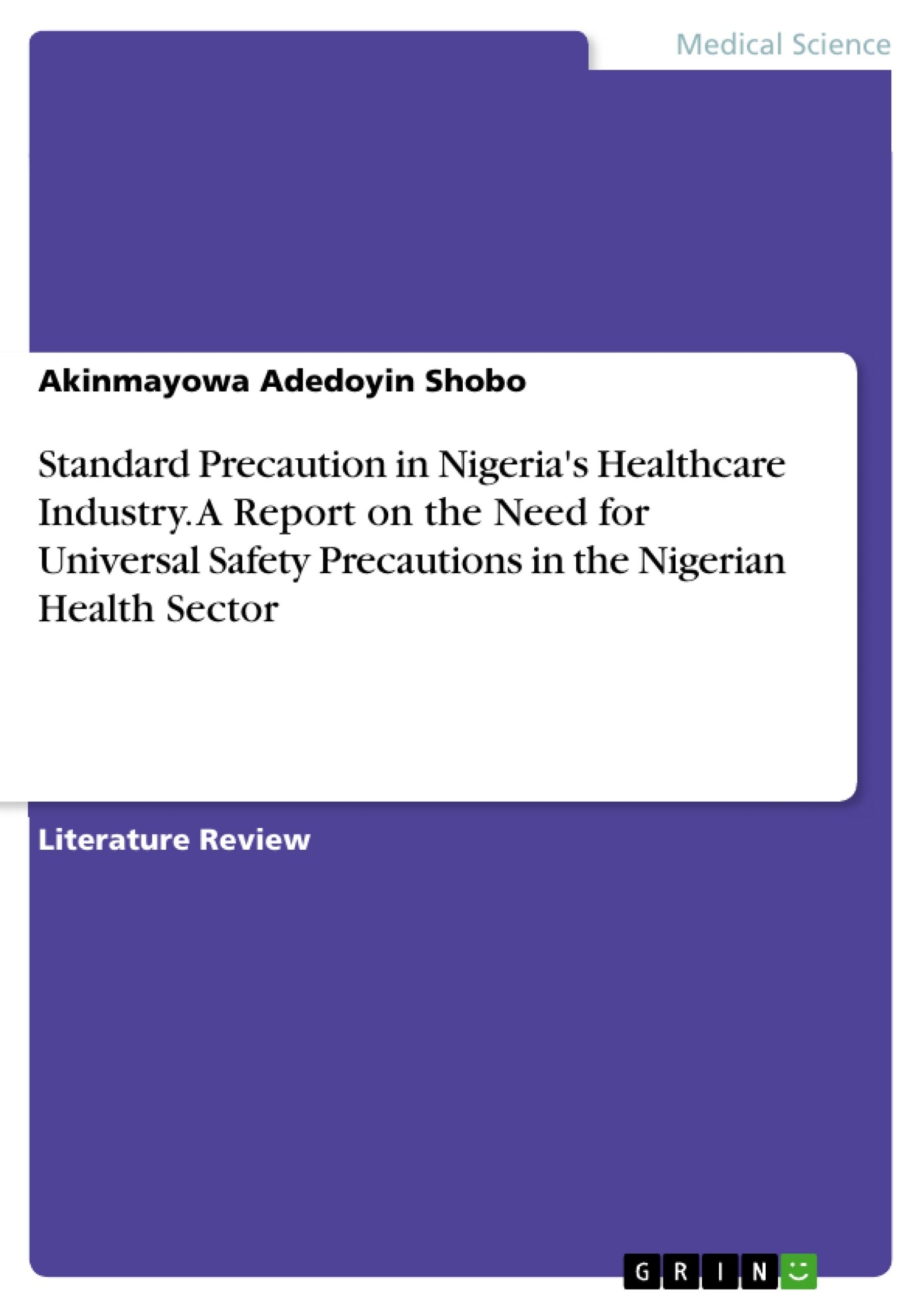In today's world, there exists an overwhelming body of literature with respect to some of the most common causes of infection including viruses, bacteria, and fungi among others. The rising cases of virulence and pathogenicity of these infection-causing micro-organisms in healthcare facilities has led to a consistent increase in hospital -acquired infections. This review attempts to highlight the current knowledge about the role of the universal standard precaution guidelines for tackling the challenge of the rising records of nosocomial infections with respect to healthcare professionals.
In 2014, there was wide spread panic all over the west coast of Africa from Liberia to Guinea, from Nigeria to Sierra Leone as a result of the re-emergence of Ebola, a viral hemorrhagic disease. According to the Online New Telegraph report (2017) titled “Preventing re-emergence of Ebola”, the relative low knowledge of the disease in some countries (in addition to other factors) had facilitated the spread of the viral disease within these African States. More importantly, the Nigerian case may be said to be particularly unique.
In response to the call for action by the Ministry of Health (MoH), the Nigerian public had quickly adopted some precautionary measures, “People used face masks, hand gloves, hand sanitizers, refused to even shake hands with or hug acquaintances and friends.” Unfortunately, it seemed that while the general public (even the least educated) had started taking measures against the contagion, a highly significant part of the population was left vulnerable. One of such grievous consequence led to the death of Dr. Stella Adadevoh (1956-2014), who had to make the ultimate sacrifice to avert a major pandemic similar to the death plague in Europe. Dr. Stella Adadevoh had correctly diagnosed the Liberian, Patrick Sawyer as the first case of Ebola at First Consultant Hospital, Lagos despite his insistence that he has a bad case of Malaria. “Dr. Adadevoh tried to create an Isolation area, despite the lack of protective equipment, by creating a wooden barricade outside Patrick Sawyer’s door.” The rest of the painful account rests in the annals of history.
Inhaltsverzeichnis (Table of Contents)
- 1 Background
- 2.1 Nosocomial infection
- 2.1.1 Types of nosocomial infections.
- 2.1.2 Epidemiology of nosocomial diseases.
- 2.1.3 Pre-disposing factors to nosocomial infection
- 2.1.4 Mode of transmission of nosocomial infections
- 2.2 Standard precautions and Infection Control of Hospital – Acquired infections....
- Standard (or Universal) Precautions
- 2.2.1 Components (or Methods) of Standard Precaution.
- 2.2.2 Contributory factors that influence non-adherence to standard precaution......
- 2.2.3 Challenges of the Standard (or Universal) Precautions
- 2.3 The Healthcare Institution in Nigeria and Its structure
- 2.4 Other Infection Control Approaches........
- 2.5 Studies on knowledge, compliance, resource availability and barriers to standard precaution (summary of the discussion)...
- 2.6 Conclusion.
Zielsetzung und Themenschwerpunkte (Objectives and Key Themes)
This literature review aims to explore the significance of standard precautionary measures within the healthcare industry in Nigeria, particularly concerning the control and management of infections. It analyzes the historical context of the Ebola outbreak and its impact on healthcare practices.
- Nosocomial Infections: The prevalence and risks of hospital-acquired infections, including their contributing factors and epidemiology.
- Standard Precautions: The implementation, effectiveness, and challenges associated with standard precautions in preventing infections within healthcare settings.
- Infection Control in Nigeria: The specific context of infection control in Nigerian healthcare institutions, considering the structure and resources available.
- Knowledge and Compliance: The role of healthcare worker knowledge and adherence to standard precautions in infection control efforts.
- Barriers to Standard Precautions: Identifying and analyzing the obstacles hindering effective implementation and adherence to standard precautions.
Zusammenfassung der Kapitel (Chapter Summaries)
The review begins with a historical context of the 2014 Ebola outbreak in West Africa, highlighting the need for robust infection control measures. It then delves into the concept of nosocomial infections, defining them as infections acquired by patients during medical care. The review explores the epidemiology of nosocomial infections, discussing their prevalence, types, and the risk factors contributing to their spread. This includes examining the role of intensive care units (ICUs) as a potential epicenter of hospital-acquired infections. The chapter then focuses on standard precautions, analyzing their components and the factors that influence adherence. The review discusses the challenges faced in implementing standard precautions and examines the current state of infection control practices in Nigerian healthcare institutions.
Schlüsselwörter (Keywords)
This review centers on the crucial aspects of standard precautions, nosocomial infections, infection control, healthcare worker knowledge, compliance, and the challenges and barriers encountered in their implementation within the Nigerian healthcare context.
- Quote paper
- Akinmayowa Adedoyin Shobo (Author), 2019, Standard Precaution in Nigeria's Healthcare Industry. A Report on the Need for Universal Safety Precautions in the Nigerian Health Sector, Munich, GRIN Verlag, https://www.grin.com/document/507992



